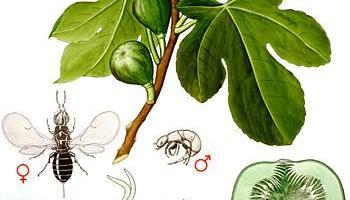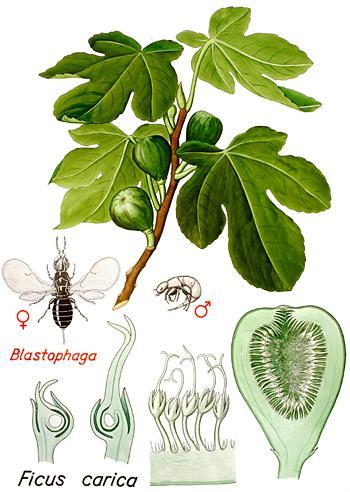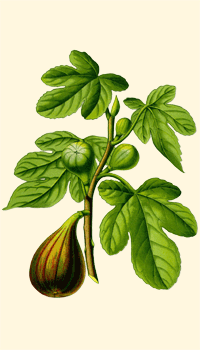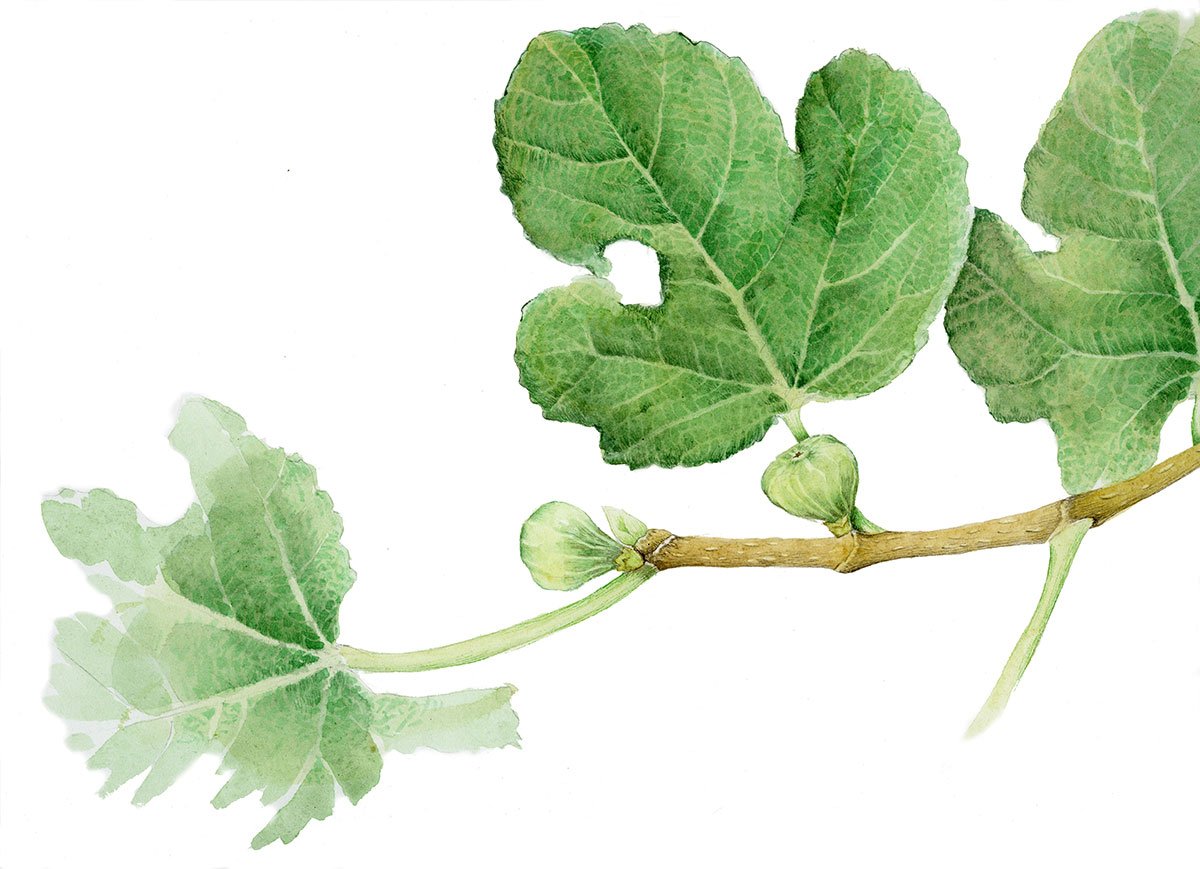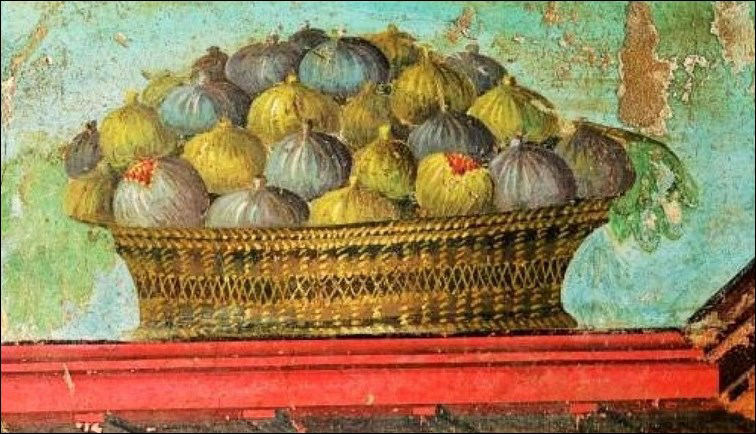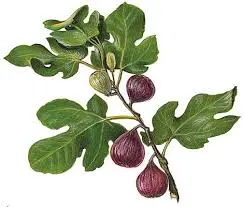The fig (Ficus carica) is a plant with a short and branching trunk, smooth grayish-brown bark. Adult plants have a very expanded crown thanks to numerous upward-growing branches. Its root system is expansive but does not go very deep into the soil. The leaves are large and rough with three or five lobes. They are arranged alternately on the branches. The upper surface of the leaf is darker green than the lower surface, and inside the fig fruit flows a sticky, white sap called latex.
The species is very frugal and can grow in rocky soil, on cliffs, and in cracks in old walls. It does not prefer clayey or too damp soil, and although it can tolerate drought, it cannot withstand low temperatures. At the end of the branches, there are woody buds and flower buds from which the syconia are generated. The syconium is what is commonly considered the fruit of the fig; its color varies from green to yellow to black-violet.The syconia are hollow and fleshy structure that encloses flowers, with an apical opening called ostiole that allows pollinating wasps to enter. The true fruit consists of tiny achenes contained within the pulp that we notice when we chew the fig.
The fig is found in two forms: wild (called Caprifico) and domestic, which produces more appetizing figs. The inflorescence of the domestic fig only has female flowers, while that of the Caprifico has both male and female flowers. Caprifico produces three types of figs during the year: Mamme, Profichi, and Mammoni, which mature respectively at the end of spring, in summer, and in autumn. The domestic fig, on the other hand, has two forms of figs: Fioroni, which mature in late spring, and Real Figs, which mature in August-September.
The fecundation of the flowers is made possible thanks to the Blastophaga psenes, a hymenoptera that carries out its biological cycle in the inflorescence of the caprifig. Inside the ovaries of the female flowers are created small 'galls' where the larvae of this insect mature. In April, non-winged males are born, which fertilize the females while they are still inside the gall. After fertilization, the males die, and the females exit through the ostiole, where male flowers are present. They become covered in pollen, which is then transported to other female flowers, both of Caprifico and domestic fig, ensuring fertilization. In the domestic fig, Blastophaga wasps cannot deposit their eggs, but they can circulate among the flowers. Therefore, without the Caprifico, the domestic fig cannot be pollinated. In some areas, the figs of Caprifico, rich in insects and pollen, are hung on the branches of the domestic fig, a technique known as 'caprification.'
The fig is native to southwestern Asia, from here it has spread to Europe. This species is sacred to Buddhists and Muslims and is frequently mentioned in the Bible (the fig leaf covers Adam's nakedness in the Garden of Eden). In ancient Greece, fig plants were associated with the god Dionysus, and in Rome, some of them were even worshiped. Because of the latex that flows from its branches and fruit, figs were planted in front of the temple of Rumina, the goddess of breastfeeding.
In peasant culture, the fig tree was a place to rest in the shade during the hottest hours of summer months. Beverages were kept cool under its crown during work in the fields.
